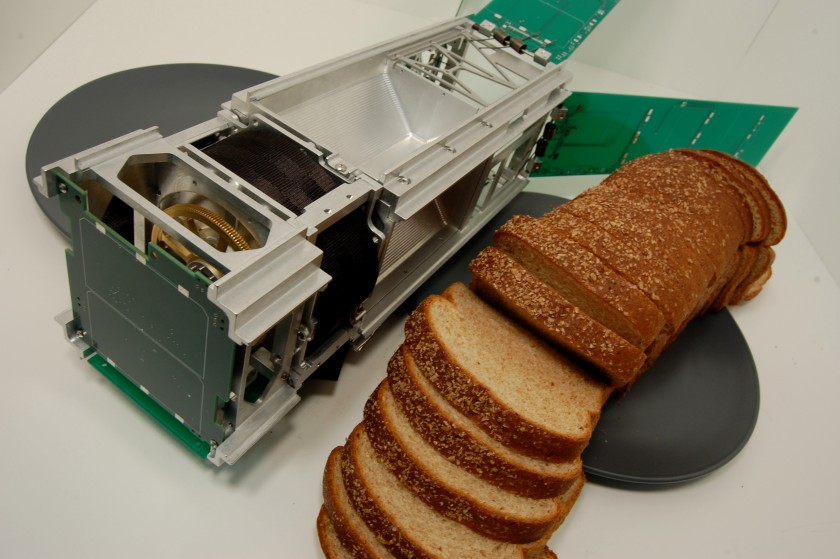LightSail 2 Deploys Solar Sail to Surf the Sun's Rays

SAIL DEPLOYMENT COMPLETE! We're sailing on SUNLIGHT!!!!! pic.twitter.com/PA74NMa7RyJuly 23, 2019
A spacecraft the size of a loaf of bread has finally turned itself into a solar sail.
On Tuesday (July 23) at about 2:47 p.m. EDT (1847 GMT), a motor onboard the small LightSail 2 cubesat began deploying the mission's 344-square-foot (32-square-meter) solar sail, which is about the size of a boxing ring. LightSail 2 is the passion project of The Planetary Society, and the space advocacy organization wants to demonstrate that solar surfing is a viable propulsion technique for spacecraft.
"We're very excited to be past this huge milestone," Jennifer Vaughn, Chief Operating Officer at The Planetary Society said during a livestream of the deployment from the spacecraft's control center in California. "We now have a sail. It's time to go sailing! … We now start the very difficult process of sailing in space."
Related: Sailing on Sunbeams: LightSail 2 to Soar Higher Than Space Station
The Japan Aerospace Exploration Agency (JAXA) launched the first successful solar sail demonstration flight — Ikaros — in May 2010 and dubbed it a "solar yacht." This project, which deployed its sail in June 2010, proved that a thin membrane attached to a spacecraft body could propel the vehicle forward by gathering momentum from the push of the light particles, called photons, emitted by the sun. NASA also launched a small cubesat sail called Nanosail-D in November 2010.
But since then, solar sailing has been stuck in the mud. The Planetary Society's goal for the Lightsail 2 mission was to change that, spending a year orbiting Earth powered by photons.
All indications are that #LightSail2 has deployed its solar sail as planned. We will now confirm deployment was successful by downloading imagery.July 23, 2019
"All indications are that #LightSail2 has deployed its solar sail as planned. We will now confirm deployment was successful by downloading imagery," The Planetary Society shared via Twitter. In another tweet that followed shortly after, the organization said they would "begin downlinking imagery on today's remaining tracking passes to confirm."
Breaking space news, the latest updates on rocket launches, skywatching events and more!
LightSail 2 beamed back its first views of Earth earlier this month (July 7) and The Planetary Society confirmed that the spacecraft took photos during the deployment maneuver.
To recap: All indications are that #LightSail2 has successfully deployed its solar sail! We will begin downlinking imagery on today's remaining tracking passes to confirm. pic.twitter.com/j57FYrhb8RJuly 23, 2019
So far, the LightSail 2 mission has been running more smoothly than that of its predecessor, which experienced a software glitch just two days after launching into orbit around Earth.
The solar-sail concept goes back almost a century, according to JAXA's website, and solar sailing has been a passion of The Planetary Society founders going back several decades.
"Our first project around solar sailing really started about 20 years ago with our Cosmos 1 solar sail. That mission would have been the very first space test of a solar sail," Vaughn said during a June 20 teleconference held days before LightSail 2 launched aboard a SpaceX Falcon Heavy rocket on the early morning of June 25.
Science communicator Bill Nye, who leads The Planetary Society, first heard about solar sails in the famous astronomer Carl Sagan's classroom at Cornell University 42 years ago. During the teleconference, he recalled his teacher talk enthusiastically about the idea of solar sailing.
If all continues to go well, LightSail 2 could prove the viability of using photons to propel other versions of this technology deep into the solar system.
- Evolution of Solar Sails for Space Travel (Photos)
- Bill Nye Brings Out the F-Bombs and a Blowtorch to Talk Climate Change
- At Solar System's Edge, NASA's Voyager 2 Probe Copes with Reduced Power
Follow Doris Elin Salazar on Twitter @salazar_elin. Follow us on Twitter @Spacedotcom and on Facebook.

Doris is a science journalist and Space.com contributor. She received a B.A. in Sociology and Communications at Fordham University in New York City. Her first work was published in collaboration with London Mining Network, where her love of science writing was born. Her passion for astronomy started as a kid when she helped her sister build a model solar system in the Bronx. She got her first shot at astronomy writing as a Space.com editorial intern and continues to write about all things cosmic for the website. Doris has also written about microscopic plant life for Scientific American’s website and about whale calls for their print magazine. She has also written about ancient humans for Inverse, with stories ranging from how to recreate Pompeii’s cuisine to how to map the Polynesian expansion through genomics. She currently shares her home with two rabbits. Follow her on twitter at @salazar_elin.

